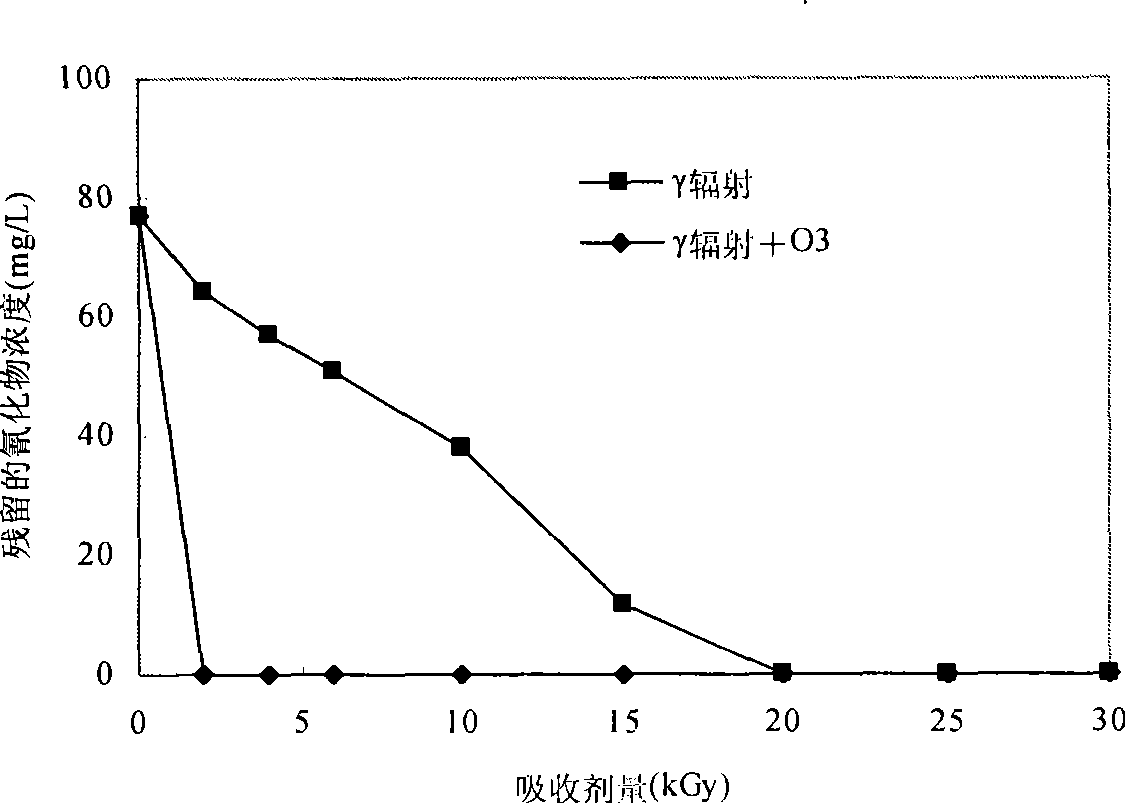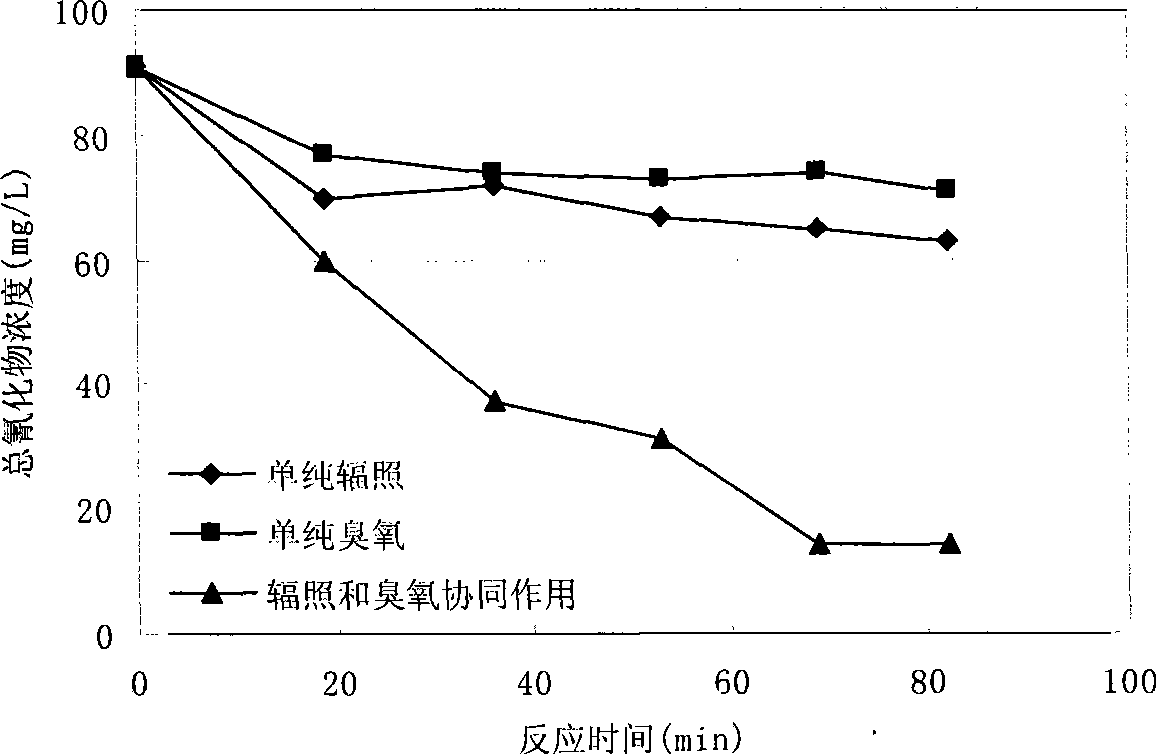Method for removing cyanide in waster water by ionizing radiation and ozone oxidization
An ionizing radiation and ozone oxidation technology, applied in the field of nuclear technology application and environmental protection, can solve the problems of high power consumption, inability to effectively destroy complex cyanide, high cost, etc., achieve fast reaction speed, no secondary pollution, The effect of reducing radiation dose
- Summary
- Abstract
- Description
- Claims
- Application Information
AI Technical Summary
Problems solved by technology
Method used
Image
Examples
Embodiment 1
[0054] Potassium cyanide (KCN) solution is prepared by analytical reagent and triple double distilled water, adjusts the pH=10.25 of solution respectively with NaOH, and the radiation source adopts Tsinghua University Institute of Nuclear Energy and New Energy Technology 60 Co radiation device with a radioactivity of 481TBq. In the experiment, 25ml of the solution was put into a 50ml radiation-resistant tube each time, and placed in the central hole for irradiation. The gamma dose rate of the central channel was measured to be 294Gy / min by a potassium dichromate (silver) dosimeter. Under the same reaction conditions, irradiation and irradiation-ozone combined process treatment were carried out respectively, and the treatment effect is shown in the attached figure 1 .
Embodiment 2
[0056] The preparation method of potassium cyanide (KCN) solution is the same as embodiment 1, adjusts the pH value=9,11 of solution respectively with NaOH, and radiation source and irradiation test method are identical with embodiment 1. Under the same reaction conditions, the irradiation and irradiation-ozone combined process treatment were carried out respectively, and the degradation effect of simple cyanide did not change much from that of Example 1.
Embodiment 3
[0058] The radiation source in Example 1 was changed to a 0.5 Mev, 20 mA Dynamitron type electron accelerator, and the dose rate of the electron beam was 21.2 kGy / min. Other conditions are constant, the degradation effect of simple cyanide and embodiment 1 change little.
PUM
 Login to View More
Login to View More Abstract
Description
Claims
Application Information
 Login to View More
Login to View More - R&D
- Intellectual Property
- Life Sciences
- Materials
- Tech Scout
- Unparalleled Data Quality
- Higher Quality Content
- 60% Fewer Hallucinations
Browse by: Latest US Patents, China's latest patents, Technical Efficacy Thesaurus, Application Domain, Technology Topic, Popular Technical Reports.
© 2025 PatSnap. All rights reserved.Legal|Privacy policy|Modern Slavery Act Transparency Statement|Sitemap|About US| Contact US: help@patsnap.com



